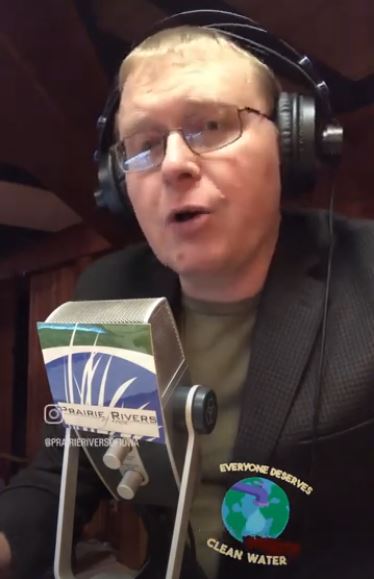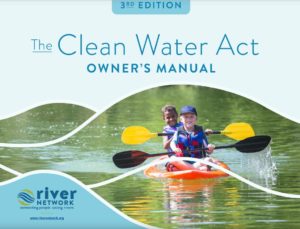“The Clean Water Act: 50 Years, 50 Facts” will be a weekly series of short videos on our Instagram and YouTube channels, celebrating the 50th anniversary of the Clean Water Act, and focusing on rivers and lakes in Iowa. At the time I wrote this, we had published the first four episodes and recorded material for the next four.
The Clean Water Act is a law that works best when concerned citizens are paying attention and speaking up, so it’s worth the trouble to make sense of legal jargon like a point source, 303(d) list, 319 grants, NPDES permits, and the ordinary high water mark. Yikes! We’ll cover these topics and more in accessible and bite-sized chunks!
Environmental policy can be a dry subject, so we’re having some fun with it! I take full responsibility for the theme music, inspired by a Steely Dan hit that debuted a month after the Clean Water Act. You can thank Daniel Huber and Mike Kellner for making the videos pretty and putting them out there; I’m clueless when it comes to social media.
The videos are less than 90 seconds and are best viewed on a smartphone in portrait mode. The first few were me talking from my office, but I’ve already started taking field trips (Fact #6 was filmed in front of an effluent pipe) and I hope to feature guests whose job or advocacy work intersects with the Clean Water Act.
The Clean Water Act is a big law. I know a lot about some pieces and very little about other pieces. My reference books for the series will be EPA’s Watershed Academy Web and River Network’s Clean Water Act Owner’s Manual. If I overlook something, you’ll hear from my “fact-checker” in the description or comments section.
I want this to be relevant, so I will sometimes follow up on a fact with some commentary or include a link to policy recommendations from other organizations. For example, here’s a report from the Environmental Integrity Project on how to close the gap between the CWA’s goals and reality. Yes, I work for an environmental organization and we would like some more environmental protection, please.
However, I can understand why many people see environmental regulation as burdensome. I hope that a better understanding of how the system works (or doesn’t work) could help us find some common ground. My perspective on environmental law is informed by a stint at the Wisconsin Department of Natural Resources where I learned how complicated it can be to fill a small amount of wetland legally, and how often people got away with filling a large amount, illegally. What if fewer projects needed a permit, but we had tougher enforcement? Wouldn’t that save more wetlands on balance, while leveling the playing field and reducing compliance costs for most businesses?
And if common ground is out of reach in today’s political climate, hey, it’s just some short videos. Enjoy!


